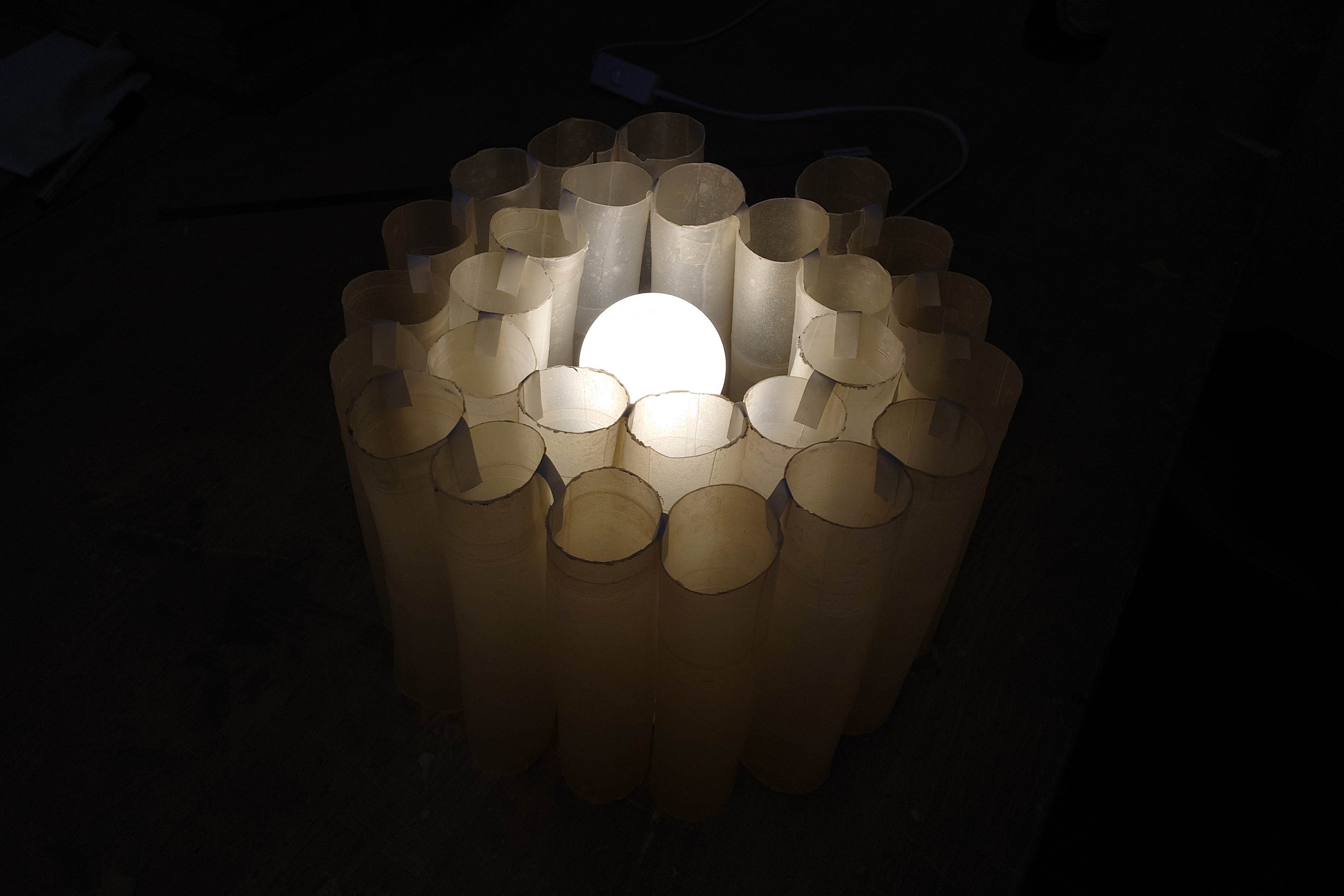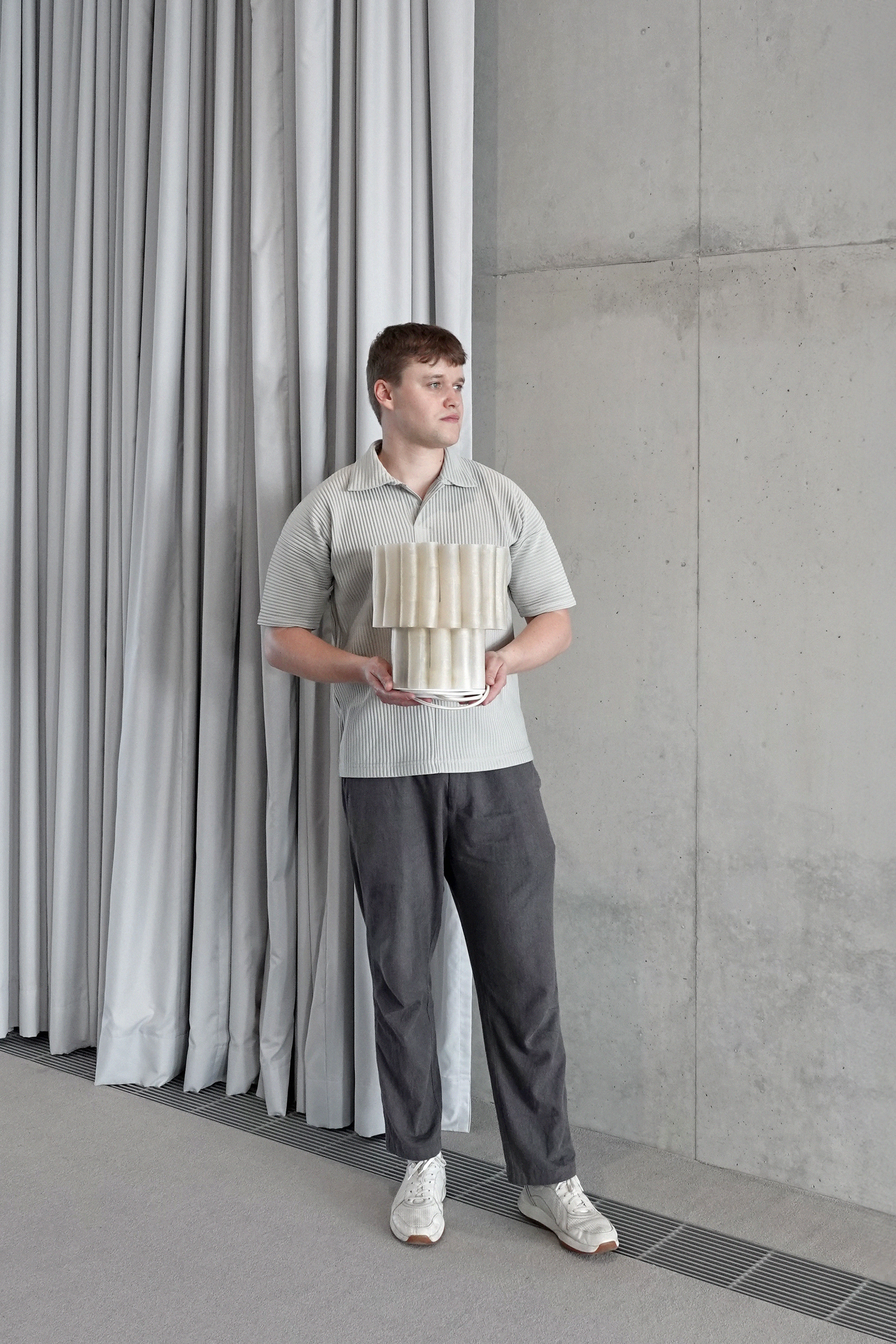Bánh Tráng
2024Bánh Tráng is a lamp made from edible rice paper, showcasing the biomaterial in a new context beyond simple consumption. The lamp highlights the importance of researching biomaterials and demonstrates that even already familiar materials can develop aesthetic qualities in new usage scenarios. The individual tubular segments of the lamp evoke the original use of the material as edible filled rolls, giving the object a metaphysical and formal aesthetic significance. The now light-filled rolls emit a warm, shimmering glow that reveals the true beauty of the material. The partially curved and deformed rolls reflect the material characteristics of dried paper, contrasting with the orderly arrangement of the segments. This contrast symbolizes the seemingly contradictory use of a food item for an entirely different purpose.

"Edible rice paper is a very minimalist material; it can be made from just a single ingredient with water and heat, yet it is incredibly complex."



Edible rice paper (Bánh Tráng) is traditionally made from a mixture of rice flour, water, and salt. First, the rice is soaked and ground into a fine flour. This flour is then mixed with water to form a smooth batter. The batter is spread thinly onto a cotton cloth and then steamed. The heat solidifies the batter, giving it its characteristic slightly translucent texture. After steaming, the rice paper is dried and is ready to be used, for example, in spring rolls or other dishes.


A light goes on
Rice paper has low light conductivity as it is a semi-transparent, porous material. It allows diffuse light to pass through, making it ideal for applications like lampshades and decorations where soft light diffusion is desired. The light transmission depends on the thickness and structure of the rice paper.
Rice paper has low light conductivity as it is a semi-transparent, porous material. It allows diffuse light to pass through, making it ideal for applications like lampshades and decorations where soft light diffusion is desired. The light transmission depends on the thickness and structure of the rice paper.



︎ The lampshade is made entirely of rice paper, and the individual segments were also connected with rice paper. After drying and cutting the tubes to length, they were joined together with small strips. The wet material adheres to the dry parts and bonds with them after drying, creating a load-bearing structure.
A fragile idea
Since the rice paper can develop stress cracks during drying, it was extremely difficult to find a shape that wouldn’t crack during the drying process. Large surfaces are particularly prone to this, which is why the lamp was made from smaller tube segments. These segments are quite stable due to their simple geometry and also provide a formal reference to the original use of the edible material.
Since the rice paper can develop stress cracks during drying, it was extremely difficult to find a shape that wouldn’t crack during the drying process. Large surfaces are particularly prone to this, which is why the lamp was made from smaller tube segments. These segments are quite stable due to their simple geometry and also provide a formal reference to the original use of the edible material.



Superfood
The lamp Bánh Tráng highlights the potential of biomaterials by transforming edible rice paper into a new aesthetic and functional context. By converting an everyday food item into a light source, the versatility and beauty of the material are showcased in an innovative way. The project demonstrates that traditional materials can not only remain relevant in their original purpose but can also gain new meaning and appreciation in innovative, sustainable design applications.
The lamp Bánh Tráng highlights the potential of biomaterials by transforming edible rice paper into a new aesthetic and functional context. By converting an everyday food item into a light source, the versatility and beauty of the material are showcased in an innovative way. The project demonstrates that traditional materials can not only remain relevant in their original purpose but can also gain new meaning and appreciation in innovative, sustainable design applications.

Imprint © Jonas Krämer 2025
Portfolio︎︎︎

